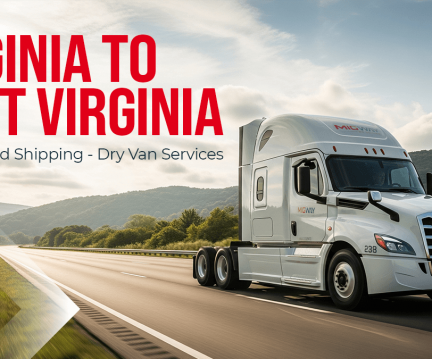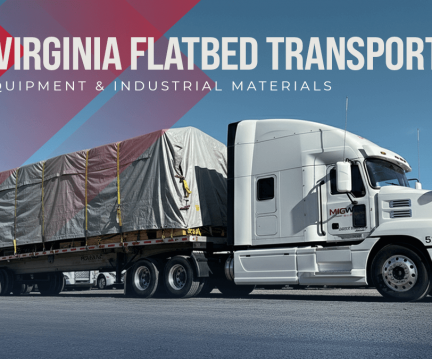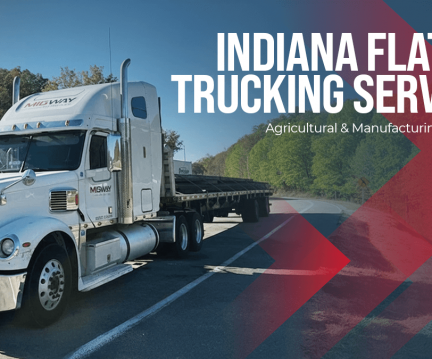Avoiding Freight Fraud: 12 Verification Steps for Shippers

Freight fraud is rising across the U.S. market. Double brokering, identity theft, fake carriers, and impersonated dispatch offices cost shippers millions every year. When a load disappears, it is rarely the thieves who pay the price. It is the shipper, the customer, and the brand.
This guide cuts out the noise and lays out twelve practical verification steps every shipper should use before releasing a load. These are operational safeguards that high performance fleets and logistics teams use to protect freight and keep supply chains running clean.
If the goal is simple, know who is touching your freight, these steps help you get there.
1. Verify Carrier Identity Through FMCSA, Not Email
Never rely on what a carrier sends in an email. Always verify identity directly through the FMCSA Safety and Fitness Electronic Records (SAFER) system.
Confirm the following:
- Legal name
- DOT number
- MC number
- Operating status (active, not pending revocation)
- Address and phone number
Fraudsters often use real carrier authority numbers with fake contact information. FMCSA data helps you separate the real carrier from the impersonator.
2. Call the Carrier Using the FMCSA Phone Number
Do not use a phone number provided in a random email or text. Use the phone number listed on the FMCSA record.
On the call, ask:
- Did your company accept this load?
- Is this dispatcher part of your team?
- Is this email domain owned by your company?
If the carrier hesitates or has no record of the load, stop immediately. Do not tender the freight.
3. Check the Email Domain for Look Alikes
Fraudsters often register domains that look almost identical to a real carrier.
Watch for:
- Extra letters (example: migwaylogstics.com)
- Dashes (example: mig-waylogistics.com)
- Swapped letters or spelling changes
Confirm that the email domain matches the official carrier website and what you see in FMCSA records. If it is not an exact match, do not send tenders or paperwork.
4. Confirm Driver Identity Before Pickup
Before the driver arrives, request:
- Full name
- CDL number
- Tractor number and trailer number
- License plate
- Driver mobile number
At pickup, match this information to the bill of lading and the rate confirmation. If any detail does not line up, pause. Call the carrier dispatch using the verified FMCSA number and confirm everything again.
Professional carriers expect this level of verification. Fraudsters try to avoid it.
5. Request Tractor and Trailer Photos
Ask the driver or carrier to send current photos of the equipment that will be used for the load.
Request:
- Side photo of the tractor
- Clear photo of the trailer
- Visible trailer number
- License plate and visible company decals if used
A legitimate carrier can send this in seconds. Fraud rings often delay, send low quality or outdated photos, or avoid the request completely.
6. Avoid Free Email Domains for Dispatch
If someone handling dispatch for a supposed carrier uses a personal email address such as:
- @gmail.com
- @yahoo.com
- @outlook.com
treat it as high risk. Legitimate carriers that run national freight networks use branded company domains and standardized communication channels.
7. Do Not Release the Rate Confirmation Until All Checks Are Done
Fraudsters push for speed. They will press you to send the rate confirmation as soon as possible.
Make it a rule to release the rate confirmation only after you confirm:
- Carrier identity
- Authority status
- Verified phone number
- Active insurance
- Assigned driver
- Equipment details
Holding the rate confirmation until verification is complete stops most double brokered loads before they start.
8. Validate Insurance Directly With the Insurance Agent
Never assume that a certificate of insurance sent by email is real. Certificates can be edited or entirely fabricated.
Steps to follow:
- Call the insurance company listed on the certificate
- Verify that coverage is active
- Confirm policy limits and cargo coverage
- Confirm that the certificate you received was actually issued by them
If anything does not match, refuse to tender the load until the carrier provides accurate documentation.
9. Review Carrier Performance and History
A carrier’s history can reveal risk even when paperwork looks correct.
Watch for:
- Recent or repeated revocations of authority
- Frequent company name or address changes
- Very new authority (younger than 90 days)
- Online complaints about double brokering or fraud
Cheap pricing combined with a brand new MC number is a strong red flag. Use caution with any carrier that does not have a stable operating history.
10. Watch Behavior at Pickup
Fraudsters often reveal themselves at the dock. Look for signs that something is not right:
- Driver refuses to show ID or CDL
- Tractor or trailer numbers do not match paperwork
- No clear way to contact dispatch or safety
- Driver is in a rush and pushes to leave without basic checks
- Equipment looks unmarked or mismatched with stated company
If anything feels off, stop loading and call the verified carrier number. Do not let the truck leave the dock until you are certain the driver is legitimate.
11. Require Real Time Tracking and Check Ins
Fraud operations try to avoid tracking at all costs. Professional carriers expect it and build it into their operations.
Set expectations before tendering the load:
- Share a tracking link or accept your tracking tool
- Provide ELD based location updates
- Send check ins at pickup, mid route, and delivery
- Provide photo proof at delivery when requested
If a carrier resists any reasonable tracking request, treat that as a warning sign and reconsider the tender.
12. Build and Maintain a Verified Carrier List
The strongest long term defense against freight fraud is a curated list of trusted carriers.
Include only partners who:
- Have stable, active authority and clean safety scores
- Use consistent contact information and company domains
- Pass identity and insurance checks every time
- Perform well on on time delivery and communication
- Respect your verification process instead of fighting it
Over time, this list will handle the majority of your freight while keeping your risk profile low.
When in Doubt, Do Not Tender the Load
Freight fraud thrives on speed and pressure. Fraudsters want you to move quickly, ignore your process, and skip verification. Your protection is the opposite. Slow the process, follow your steps, and never apologize for due diligence.
If something feels wrong, it usually is. Cancel the load, document the interaction, and alert your team. One load avoided is often worth far more than the margin you would have made.
The MigWay Standard: Zero Guesswork
MigWay runs an asset based fleet with more than 269 trucks and 450 trailers, backed by 24/7 dispatch and live tracking. We do not outsource capacity. We do not hide behind brokers. Carriers that operate with control and transparency make it easier for shippers to fight fraud.
If you want a verified, asset based partner that treats your freight like its own, MigWay is ready to move.
Request a Full Truckload Quote or call +1-980-255-3200.
Frequently Asked Questions (FAQ)
What is freight fraud?
Freight fraud covers schemes such as carrier identity theft, double brokering, fake dispatch offices, and forged documents that allow criminals to take control of a load or payment without providing honest transportation services.
What is double brokering and why is it risky?
Double brokering happens when a broker or carrier re tenders your load to another carrier without your approval. This breaks visibility, increases risk of theft, and often leaves you without clear liability protection if something goes wrong.
Which documents should shippers verify before tendering a load?
Shippers should verify the carrier authority, insurance certificate, contact information, rate confirmation details, and driver identity, along with tractor and trailer information before releasing any freight.
How can I verify that a carrier is legitimate?
Use FMCSA and SAFER to check authority and status, call the carrier using the phone number listed there, confirm the email domain, and validate insurance directly with the insurance provider before tendering freight.
What are common red flags at pickup?
Red flags include drivers who refuse to show ID, equipment that does not match the paperwork, a lack of dispatch contact, aggressive pressure to leave quickly, and unmarked or suspicious equipment at the dock.
What should I do if I suspect freight fraud?
If you suspect fraud, stop the load, do not release freight, call the verified carrier number, document all communication, and escalate the incident within your company. Do not rely on the contact information that came from the suspicious party.
How does working with an asset based carrier reduce fraud risk?
Asset based carriers own their trucks and trailers, use their own drivers, and control dispatch directly. This reduces layers of intermediaries, makes verification easier, and lowers the chance that your load is passed to unknown third parties.
See also


